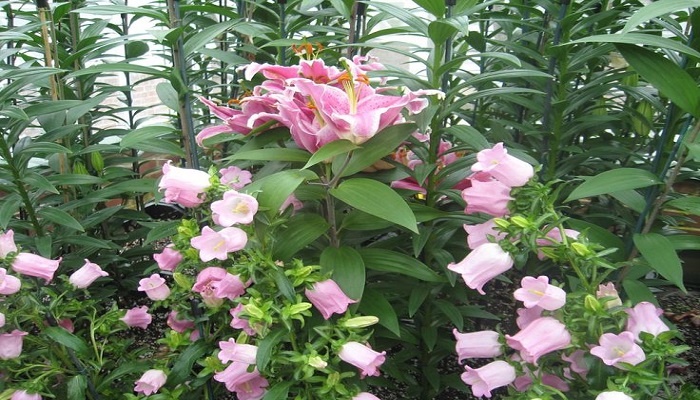Another old favourite is the Canterbury Bell (Campanula medium) which was introduced into Britain from Southern Spain in 1596. ‘Cup and Saucer Mixed’ has semi-double cup and saucer shaped flowers in shades of blue, pink and white. Canterbury Bells last well as cut flowers.
Sweet Rocket (Hesperis matronalis) with its beautifully perfumed flowers will grow happily in sun or partial shade.
Honesty (Lunaria biennis) has white to light purple flowers in late spring. The attractive flat seed pods 2.5 to 8cm long are round and silvery.
The majority of biennials are tolerant, robust and easy to grow for little outlay. Traditionally biennials are sown and raised outdoors in the kitchen garden.
Choose a sunny spot for the seedbed.
Sow seeds in 2cm deep drills.
Sow thinly and cover with fine soil.
Carefully lift the previously watered seedlings when they are 2.5 to 5cm tall and transfer them to a nurser bed.
Space the plants in rows 25cm apart and place the seedlings 10cm apart in the rows.
Keep them weed free and watered until the autumn.
If there isn’t the space to adopt this system of production seedlings can be grown in seed trays and pricked out into modules or pots.
During October/November the biennials can go into the space previously occupied by summer annuals.
Order the seeds in advance, sow hardy biennial flower seed in June/July, plant in their permanent positions in autumn and these old fashioned charmers will give much delight in spring. Although most of them are actually perennials it is best to treat them as biennials and remove them after flowering. Plants kept any longer tend to become very untidy, woody and carry fewer flowers in future years.









